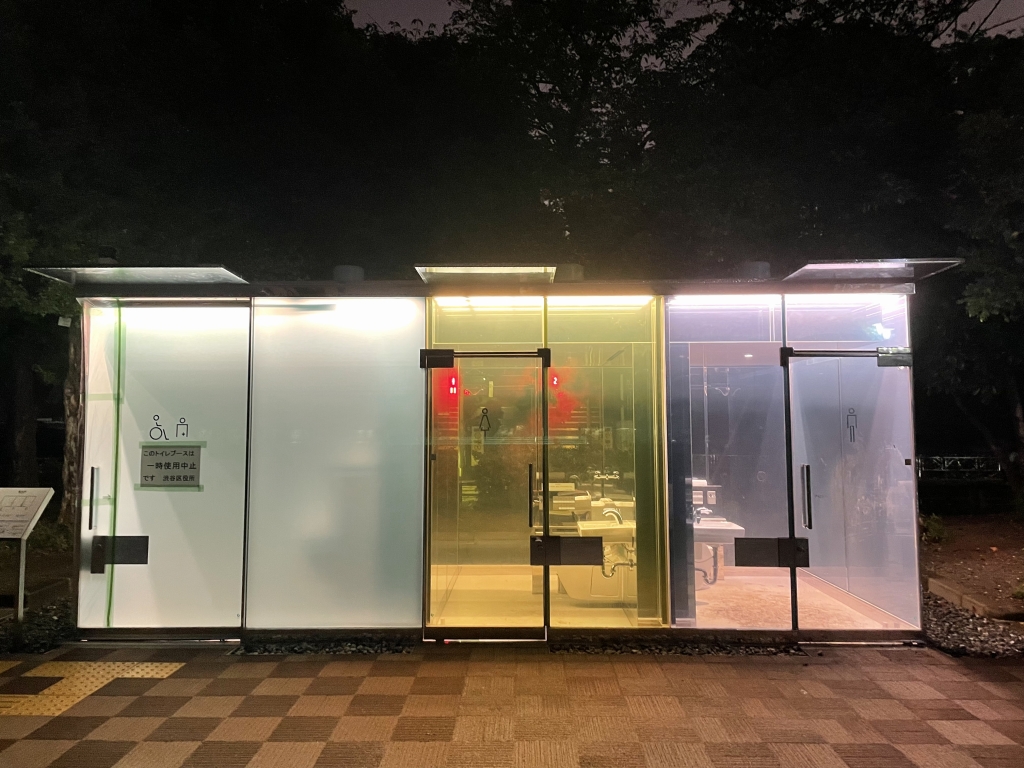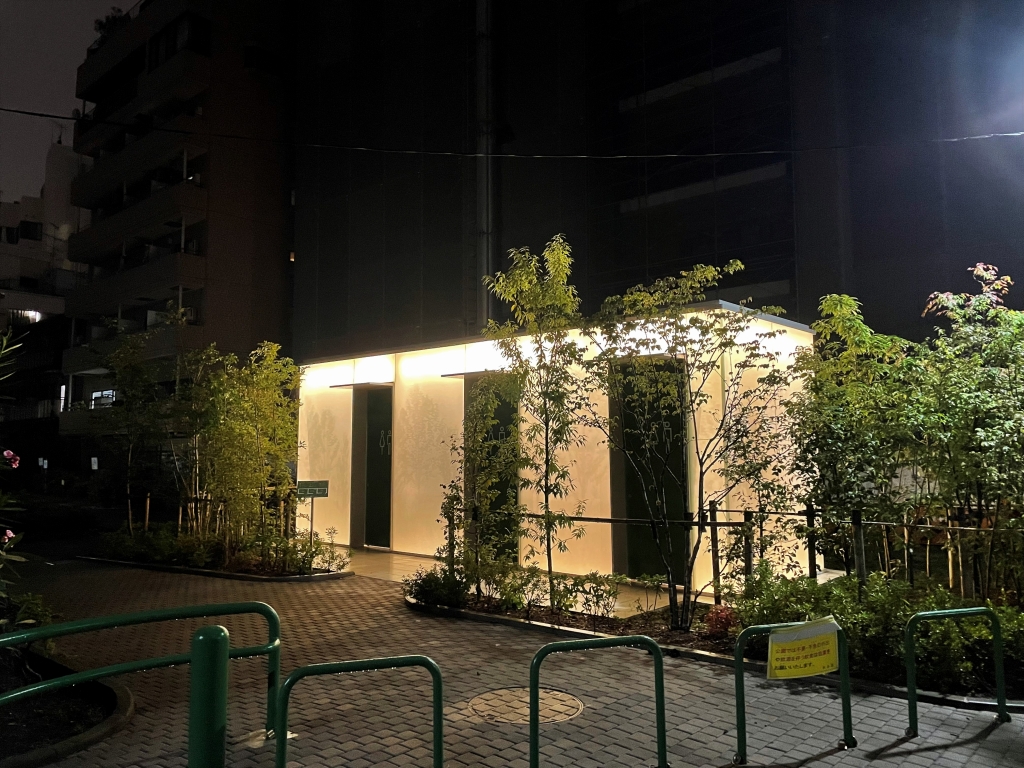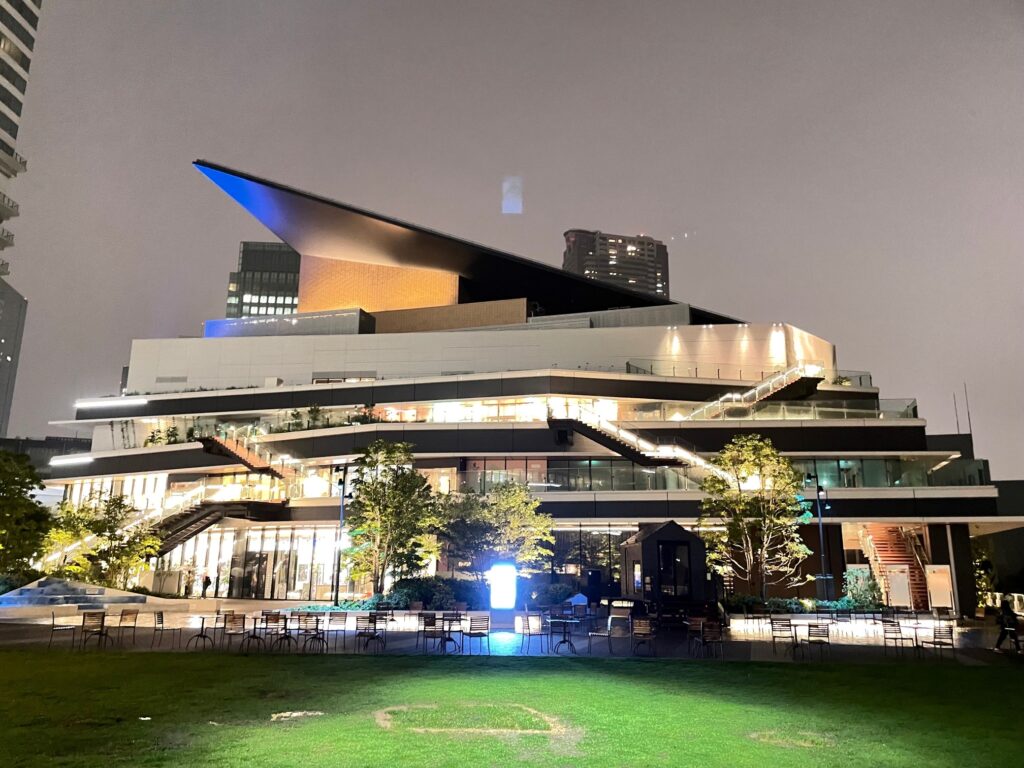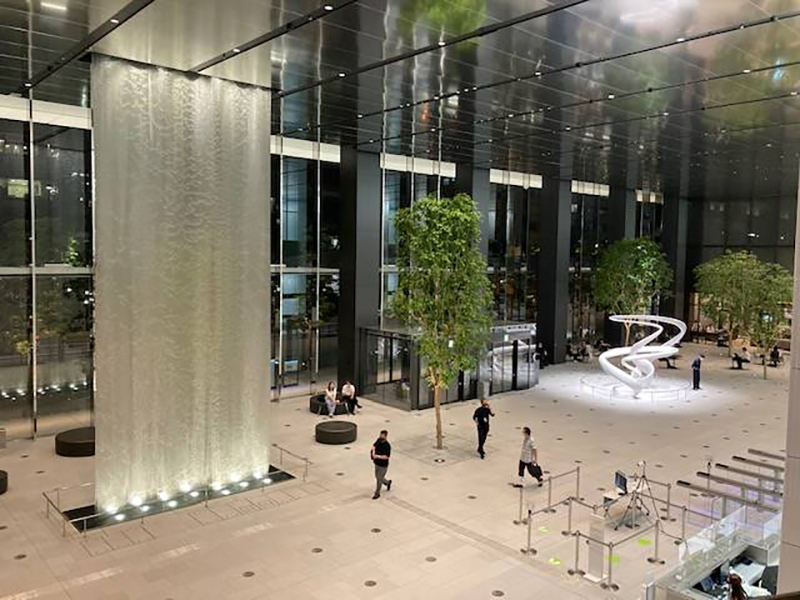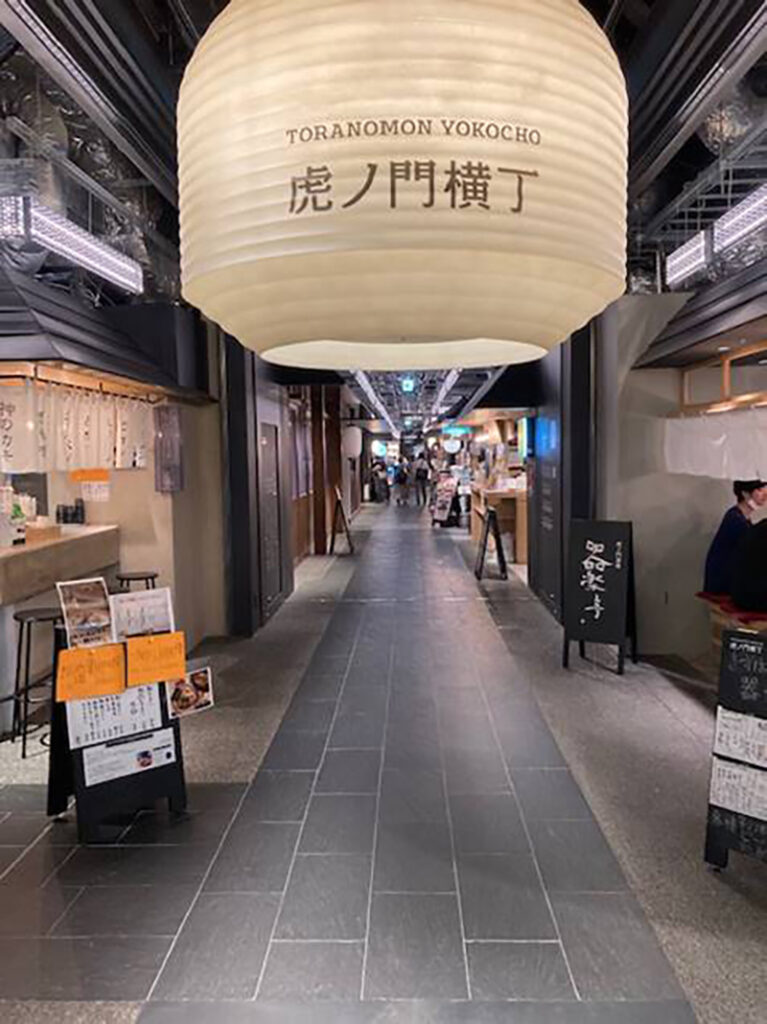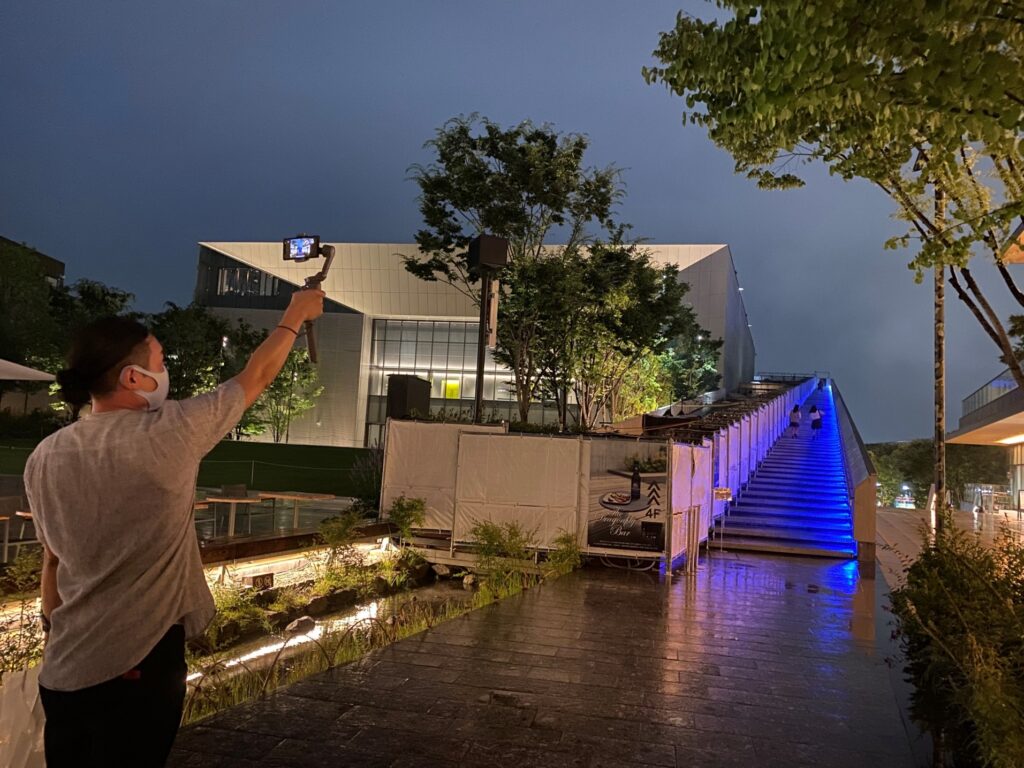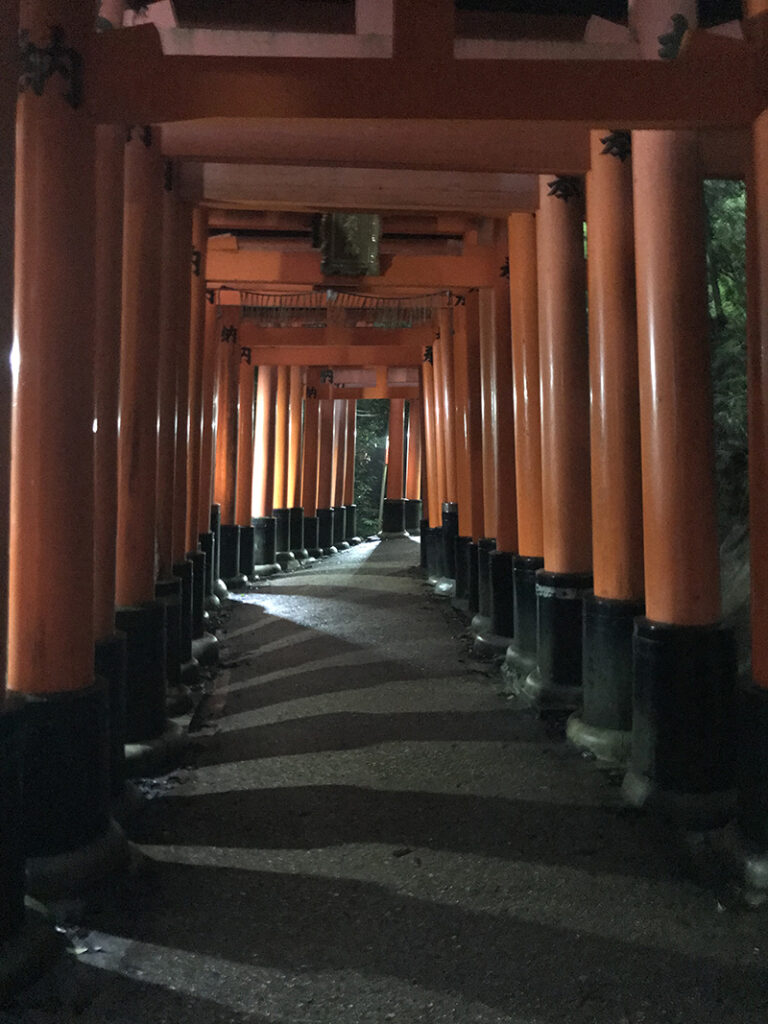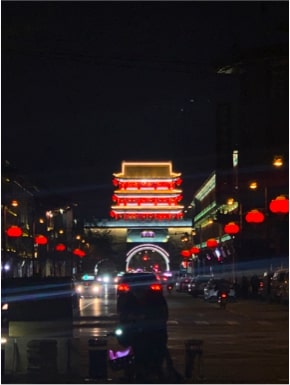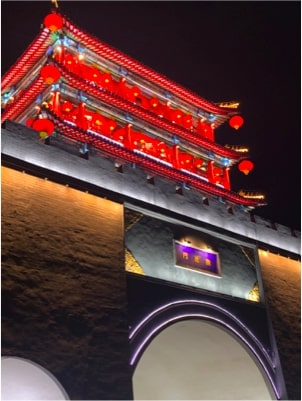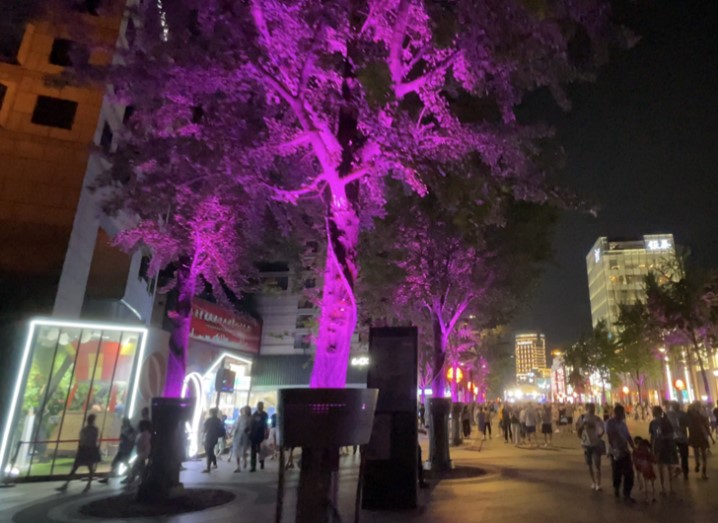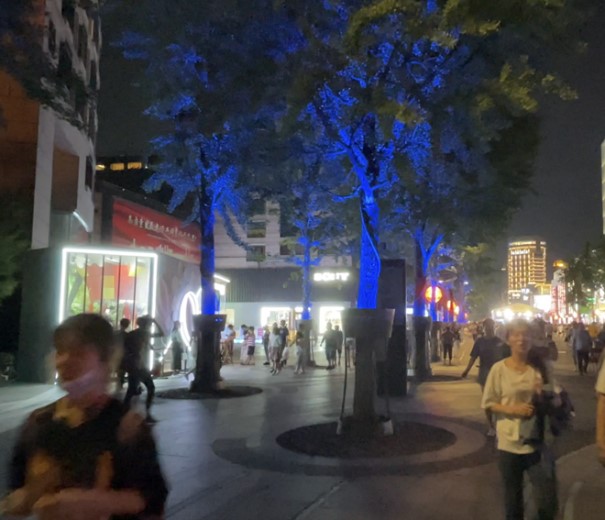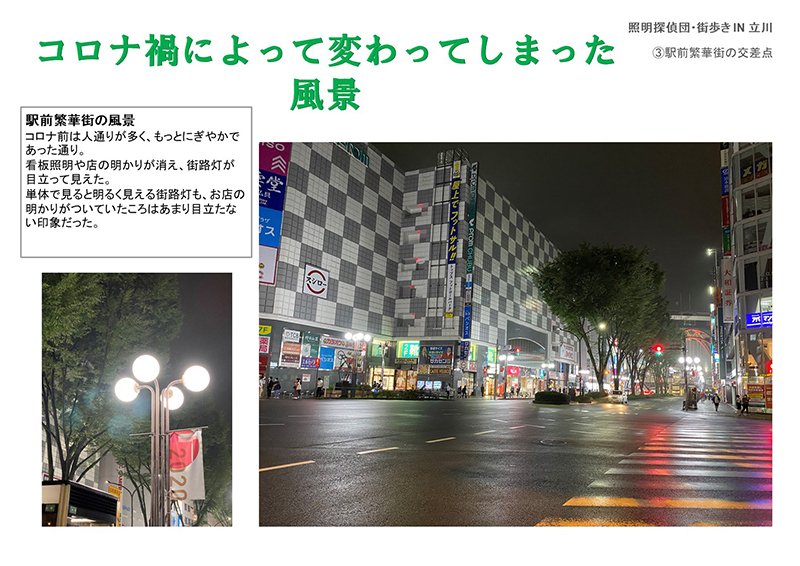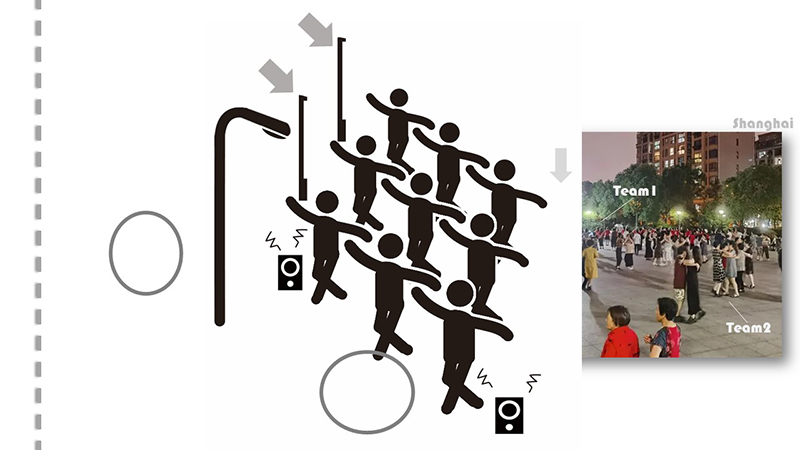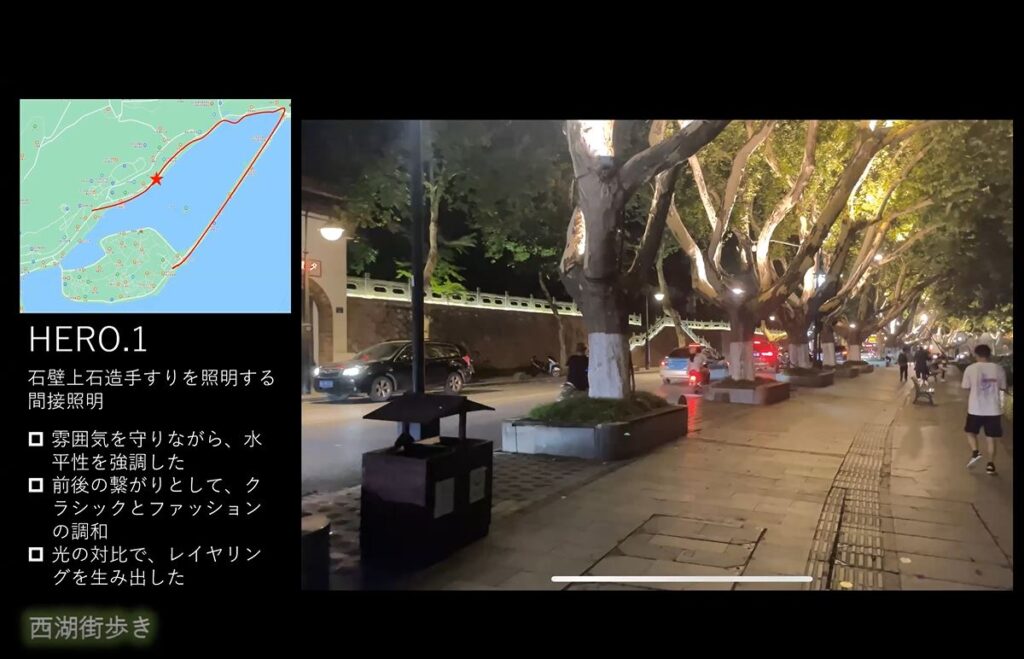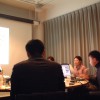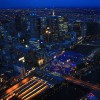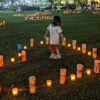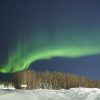Date of Issue:26 October, 2021
・Activity 1/ City Night Walk vol. 67 Live Streaming 『Hot Spot Now』(2021.0.709)
・Activity 2/ Salon Vol. 66回 Remote Salon (2021.07.28)
Lighting Detectives News Letter Vol.107 Download PDF
City Night Walk Vol. 067
Small Groups with Live Broadcasts 『Hot Spot Now』
2021.07.09 Tomoya Furukawa + Shinichi Sakaguchi+ Naoko Oguchi+ Hikaru Kawata+ Mutsurou Honma+ Rie Uomori
Yao Yuan+LIU Xinyu+GUO JIANGHAO+ Noriko Higashi
In the middle of the Covid19 Pandemic activities are still restricted. However, in order to make this event accessible to more members, we broke up into small groups and went to eight different locations for this city walk. Each area was interactive with a live broadcast.
As the number of those infected with covid19 continues to rise, meeting people and going out is still limited, as are Lighting Detective activities. However, we still want many people to be able to experience a city walk, so this time we set up a live broadcast city walk.
Participants in Tokyo broke up into three groups and spread out over the city to broadcast from the lastest hot spots. In Kyoto members broadcast from the timeless tourist spot, Fushimi Inari Shrine. In China, members broadcast from three cities for a very full menu.
■Public Park Restrooms in Shibuya
The image of a public park restroom is summed up with the 4K`s, Kusai (smelly), Kitanai (dirty), Kurai (dark), Kowai (scary). Using the power of design to shake this image, The Nippon Foundation is in the middle of developing “The Tokyo Toilet” project in Shibuya Ward. We surveyed a few locations in Shibuya.
The public restrooms in Yoyogi Fukamachi Park and Haruno Ogawa Community Park have transparent walls, a totally alternative way of thinking and impractical design. However, with help from the latest advancements in transparent glass and dimming glass film it is possible. Before use, one is able to check the cleanliness of the restroom or whether someone might be hiding inside. Once inside and locked, the outer walls instantly transform to non-transparent glass. Each toilet stall is equipped with linear lighting to illuminate all corners of the stall, also doubling to illuminate the outer glass walls of the restroom so the entire facility glows like a lantern.
However, the silhouette of someone inside the stall is slightly recognizable and many women do not feel entirely safe to use the restrooms. Some even stated that they do not think they want to use the restrooms at all. A transparent public restroom is revolutionary, and we look forward to the development and improvement of technology.
The walls of the public restroom in Nishihara 1-chome Park are foggy glass printed with the silhouette of trees. Each toilet stall is equipped with linear lighting to highlight the tree silhouette and illuminate the entire restroom, which glows like a traditional paper sliding door or a Japanese-style lantern. Signage lighting is very easy to understand, clearly marking the facility as a public restroom.
In the Nabeshima Shoto Park, each toilet stall of the public restroom is covered with Yoshino Cedar, blending into the natural surroundings. The cedar is uplit with soft light, emphasizing the warmth of the timber. Some glare is unfortunate, but the overall design reflects a sense of security.
After surveying several public restrooms, our hope is that the recognition for comfortable and attractive public restrooms improves and they increase in numbers. (Tomoya Furukawa)
■Takeshiba Area
Four members surveyed the Takeshiba area, focusing on Waters Takeshiba, which opened in 2020. In the centrally located Waters Takeshiba garden, simulated moonlight shines down on the grassy lawn. However, if one lays down on the grass the lumineers are unfortunately bright.
Sections of ceiling are illuminated in the image of sunlight filtering through tree leaves, for an interesting facade design. Also sections of exterior street lighting changes colors at certain times, so visitors can enjoy the transition of time through color changes.
Due to rain and Covid there were not many people about and the area felt very lonely. This city walk was very short, but I hope on my next visit there will be more people and excitement in the area. (Shinichi Sakaguchi)
■Toranomon
Toranomon Business Tower opened in June 2020. Floors, B1 to 3F are devoted to restaurants, shopping and other service business, for a total of 58 businesses. From the 4F to 36F, all floors are office space. In the 1F entrance a waterfall and monument are highlighted with light of a high color temperature creating a crisp impression, very fitting for the office entrance. We labeled this a hero of light.
Walls in the vaulted space surrounding the escalators are softly illuminated with a gradation of light from concealed louver lighting. Care was taken so no light sources are visible. Light sources along the timber ceiling are carefully adjusted assuring beautiful light and shadow. We also labeled this a hero of light.
On the 3F, 26 restaurants are set in the “Toranomon Yokocho.” Stimulating a narrow city street, the entire space is arranged around this “alley” with linear lighting also flanking both sides. The linear light creates unity amongst each original establishment design. However it is a little too bright, negatively affecting the originality of each business design. The group was divided on whether this is a hero or villain of light.
The large wall near the escalator in “Toranomon Yokocho” was also covered with fixtures, including several metro ceiling fixtures. The design needed more organization, but overall coordination of warm color temperatures created a pleasant lighting environment. After Covid restrictions are lifted, I think more people will visit and bring needed energy to the space. (Naoko Oguchi)

■Tachikawa
The Tachikawa team surveyed the new shopping mall, “Green Springs.” The concept for this facility is “space in a futuristic and cultural city where urban life and nature intersect.” A plaza with water and greenery was built in the middle of the second floor. The area was still under construction, but cascading water was impressively designed like a runway at an airport.
Blue bollards along one street interest with warm-colored bollards lining another street, forming an x-shape. At the intersection, the lights mix turning red, blue, and green for a very symbolic space. Artwork titled “TANE”, designed by the Dutch group WERC, are placed along the tree-line pathways and randomly illuminated creating a sense of rhythm while walking.
Colored lighting is heavily used in centrally located landscaping, along with various types of fixtures. However, tree uplights were covered with thick foliage, only illuminating the base of the trees for an obtrusive impression of the design.
The entrance to “Green Springs” is under the tracks of the elevated monorail. Compared to “Green Springs”, regular street lighting is whitish, creating an invisible boundary between old and new. From here, the walk to the station is brightly lit with many street lights along the way. Because of covid, several businesses were closed, further emphasizing the heaviness of the street lights. Tachikawa is still a city under much development, but when new architectural projects are completed the city lighting should also be revised in that area. (Hikaru Kawata)
■Kyoto
In the world today, the visual standard is dominated by instagramability. Even though this is a very shallow barometer, the historical temples and shrines of Kyoto are being engulfed by this raging wave, which seems to be the new standard. So we were curious as to how it is affecting popular tourist spots around the city, such as Fushimiinari Taisha Shrine, which is very instagramable. Nervously, we set off on our survey.
However, there was no need to worry about Fushimiinari Taisha Shrine. From the hand cleansing basin on our way to the main shrine, deep in the forest, we stopped to visit the Kumataka Shrine. From this point, there is a shrine located even deeper, a kind of secret shrine to pray to the gods. We wanted to see what lay in this secret area, but essentially it is a sacred area with limited human interaction.
The lighting environment also seems to be divided at this point. The area most visitors use to proceed to the main shrine is designed with incandescent hanging lanterns for subtle, but comfortable light. From here, lighting in the sacred area filters through from in between shrine gates, like white moonlight, expressing nature in its rugged form. The lighting seems to be an act of god designed by humans, a real hero of light. (Mutsuro Honma+ Rie Uomori)

■Beijing, China
In Beijing, we surveyed the Xidan Update Field, formally the Xidanyuan Cultural Square. Xidan is a central hub in Beijing and one of the oldest shopping centers in the city. The area is surrounded by shopping malls and office buildings designed heavily with facade and commercial lighting for a very bright lighting environment. However, several years ago a plan to overhaul the plaza with a new landscape design had positive effects on the surrounding environment which has toned down the lighting. Compared to after redevelopment, lighting before redevelopment was decorative with a flat blanket of light. The new lighting design is designed around functionality and the user’s sense of comfortability.
Much of the interior and landscape lighting in the area was designed by LPA. Therefor many examples of heroes of light exist in the area. However, because of dim interior lighting or other faulty workmanship we also found villains of light.
At the plaza entrance a Chinese-style archway, a pailo, is illuminated highlighting the contours. Compared to the bright building facades in the background, the contrast is very striking. Only trees along the entrance pathway are uplit, so one’s eyes easily adjust once in the dimly lit plaza. Metallic materials used in the surrounding facades reflect light creating a very interesting scene. Lanterns releasing soft light dot the landscape for a design that is visually-friendly, but also illuminates dark areas creating a sense of security for pedestrians.
However, we also found faulty craftsmanship, irregularity along wall lighting, and several places with exposed tape lights. Some interior lighting was also too bright with excessive glare. We labeled facades that reflected light an accomplice to villians of light.
When I first started out in lighting design, I studied numbers and went over and over simulations, but I ignored the actual setting and environment. As a professional lighting designer, I found that Lighting Detectives activities are a really great place to learn about life and light outside of work. Tonight`s survey of the plaza revealed an exception to the Chinese nightscape. Next I would like to join a survey in Japan to compare nightscapes. (Yao Yuan)
■Shenyang, China
My hometown, Shenyang, originally called Mukden, is a very historical city. To tell the historical story of Shenyang we followed the Shenyang Circuit on our city walk. The Shenyang Imperial Palace is located in the middle of the Shenyang Circuit in a straight line between Huaiyuan Gate and Fujin Gate. Both gates are designed with the same lighting, so we will explain the design of Fujin Gate.
Fujin Gate is one of nine palace gates in Shenyang during the Qing Dynasty. The picture on the left shows the Fujin Gate illuminated with yellow and red color lighting, which has significant meaning. Yellow is a traditional color representing the Qing Dynasty and moral standard. From a defensive position along the palace walls, the yellow light also refers to a soberness and impenetrability. In China, red is traditionally a celebratory color symbolizing good fortune and passion. At one time, huge political ceremonies were held near the watch towers. The garden lanterns are illuminated in red to express this celebratory atmosphere. Sculptures along the watchtowers are meticulously illuminated with warm light, eaves to the left and right, and the red lanterns emphasize the solemness and grandeur of the gate.
However, the main gate to Shenyang Imperial Palace is illuminated with green colored LEDs, a total Villain of Light. The path from Fujin Gate to the Shenyang Imperial Place is illuminated with yellow and red light creating a somber atmosphere, but with a sense of happiness, which is totally spoiled by the spooky green light.
Looking at the old Mukden Palace through a new filter of light, the palace walls are grandeur, and the watchtowers have a stately beauty, both emphasized by the red lanterns, creating a very bright spot in the Shenyang nightscape.
Festive mood of Huaiyan Gate and Fujin Gate
Trees uplit with green light, a Villian of Light. (LIU Xinyu)
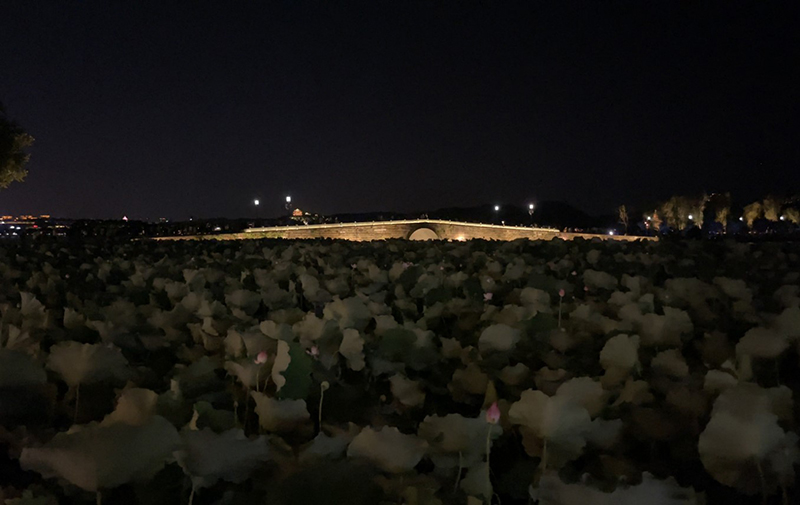
■Hangzou, China
“Compassionate people enjoy the mountains, sensible people enjoy the water. Wise men work hard, a man of virtue sits still. Wise men are happy, but the virtuous live a long life. “
◆Broken Bridge of West Lake
This monumental passage tries to connect the natural landscape of mountains and water with people in a literary sense. Likewise, we enjoyed the connection between a beautiful, picture-perfect nightscape of mountains and water with lighting design on our walk along West Lake to Longxiang Bridge.
The lotus floating on the Broken Bridge and the darkness surrounding the bridge, emphasize the bridge itself, creating a very relaxing atmosphere. The indirect lighting illuminating the bridge leaves a foggy reflection on the water. Color lighting is not used so the texture of the stone is plainly visible. The light is a paint brush, the shadows are ink, and the night is a canvas. The sky and water fill the blank space of the picture. A painting of mountains and water is not just mountains and water, but a bridge designed like a mountain and lotus like water. Light is necessary to complete this classic ink painting.
◆Bai Causeway
The lighting design divides the Bai Causeway into two sections. Yellow light illuminates the areas of movement and purple light illuminates the space for resting. Both colors are very complementary to each other creating a very relaxing atmosphere. Compared to before, tree uplights are adjusted for tree height with additional contrasting intensity of light and shadow. The lighting design resembles a well-drawn ink drawing.
◆Longxiang Bridge
The Longxiang Bridge lighting design, itself, is a hero of light with a very avant-garde design, but under the West Lake lighting design concept of “Landscape and Poetry,” one could also label it a villian of light. The design is very showy and really catches one’s eye, but there is no underlying glamor. This lighting is not fulfilling its responsibility to function as a bonding adhesive between the residential zone and entertainment zone. As I started walking along the bridge, I was very impressed with the lighting. I felt that up until that moment lighting design had no place in my life. I was surprised and fascinated by the lighting design in streets I was so familiar with. This city walk sparked something and I`d like to walk around more streets to discover more heroes of light. Also it was fun to join online and be able to correspond with Japanese lighting detectives. (GUO JIANGHAO)
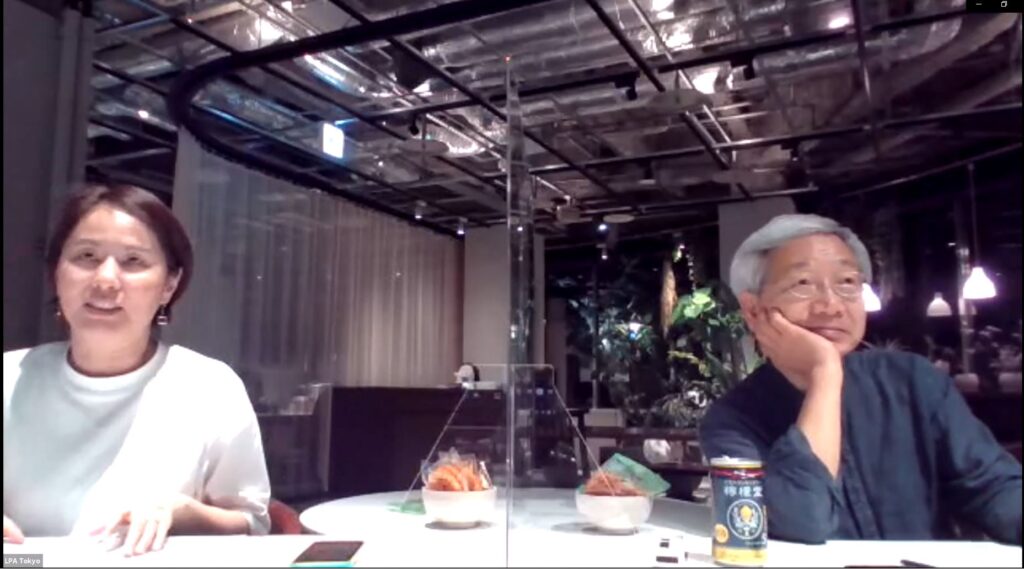
This was the first live broadcast city walk, which included several problems like sound cutting out, time lag, motion sickness from jostling images, things out of focus and so on. There is room for improvement, but it was surreal to be connected real time and share the same experiences. We learned that live broadcasting was not very complicated, opening up possibilities to broadcast in India, Singapore, Hong Kong, or other places where it gets dark around the same time. The problems are very clear and once adjusted we will be able to set up another live broadcast.
Covid is here for the long haul and online city walks are a constructive way to take Lighting Detective activities to the next level. We are always waiting for ideas and proposals from our fellow Lighting Detectives. Thank you staff for the live broadcast city walk! (Noriko Higashi)
Salon Vol. 66@ ZOOM / Review of Night Walk
2021.07.28 Noriko Higashi
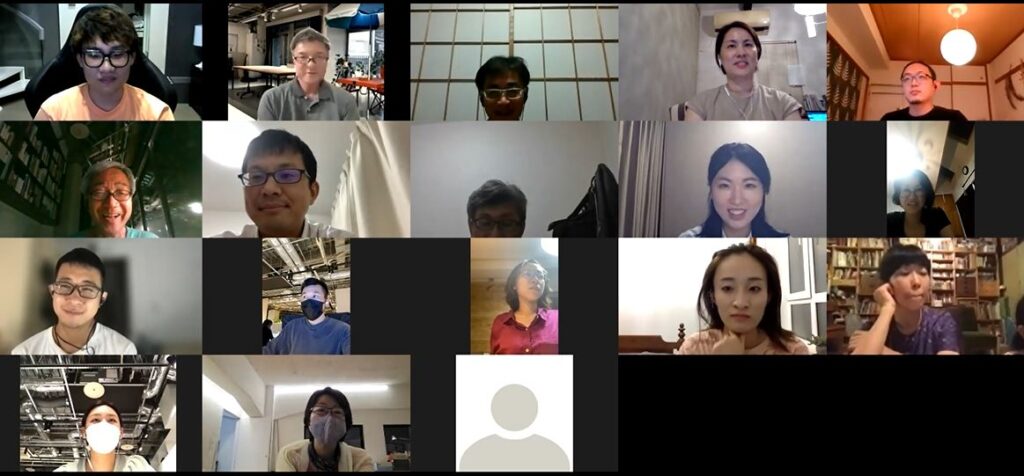
This salon reviewed the city walk from July 9, broadcasted from eight locations. We were joined by 18 members, from various locations, for a very lively session.
Review of the July 9th city walks. The live city walk broadcast included participants from not only members from the larger Tokyo area, but other parts of Japan and abroad. We asked members in other areas to join in the live broadcast with a city walk of their own, for a total of eight locations for this city walk. Each area leader was busy with network problems, bad weather, and other situations so this salon allowed them to fully enjoy the other city walk locations.
The Shibuya Public Toilet project included several well-known designers who tried to tackle the 4K`s, Kusai (smelly), Kitanai (dirty), Kurai (dark), Kowai (scary), with the latest in technology or by blending in with the natural surroundings. Each design was unique with very interesting feedback from the group.
The Waters TAKESHIBA, a group reported on the fast paced development in the Takeshiba area in recent years, which surprised several members. The nightscape is very open with color lighting, lighting to amphitheater style stairs, and simulated moonlight on the grassy lawn. The group’s collective impression was that several lighting elements are strategically placed in the design, but with covid restrictions, there were not many visitors. Hopefully on our next visit the area will be more lively.
Opened in 2020, Toranomon Business Tower was highly praised by the city walk team. Clear focal points, appealing entrance light and shadow, well-hidden fixture in the atrium, a unified public area lighting plan, and bustling shops with unique lighting.
The Tachikawa Green Springs team reported that warm colored light, used in the facade design, landscape, and shop interior, contributed to creating an appealing atmosphere. However, many of the surrounding streets still use whitish light, creating a deep divide between this new area and older streets. Because of covid there were several shuttered shops, so we didn’t get to experience the bustling nightlife we thought we might see. But we are looking forward to upcoming development in the Tachikawa area.
The Kyoto Fushimiinari Taisha Shrine team led us on a walk within the shrine grounds, an environment very removed from daily life. White light peeking through the darkness had a very spiritual feel and the 1000 gates lit by only suspended lanterns make one want to hold their breath. The team agreed that both elements created a lingering feeling for this spiritual sanctuary. Ten days after the city walk the team attended a festival held on the shrine grounds, experiencing a very dreamy atmosphere.
The Shenyang, China team leader, Lui, broadcast images of yellow and red colored lighting, expressing power, happiness, and good luck. In the plaza, several dance groups blasted music while practicing, which is becoming a social problem, as each group competes with each other for louder music and brighter lights.
Yao, who broadcasted from the Beijing Xidan Update Field, observed that compared to the surrounding bright and showy facade lighting, the plaza is dark, but for strolling or just relaxing within the plaza the lighting environment is very comfortable. Because of faulty craftsmanship, linear lighting is not very pretty and some wall materials reflect very bright light, but overall it is a very pleasant space.
Gyao, who broadcasted from Hangzhou`s West Lake, reported on how a literary world has spread and created a beautiful nightscape. The surrounding color lighting is showy and unfit with excessive lighting spoiling the atmosphere. Definitely a villain of light.
Live broadcasting has created new possibilities for Lighting Detective activities, but we realized that, as in previous years, gathering together, experiencing the same spaces, followed by lively discussions is also very important. However, the future is still foggy, and I think that connecting to various places and viewing these present situations is also fun and very meaningful. We still need to play around with and experiment more with the number of live areas, broadcasting methods, ect. We are always looking for suggestions and advice, so please contact our headquarters with any ideas. (Noriko Higashi)





